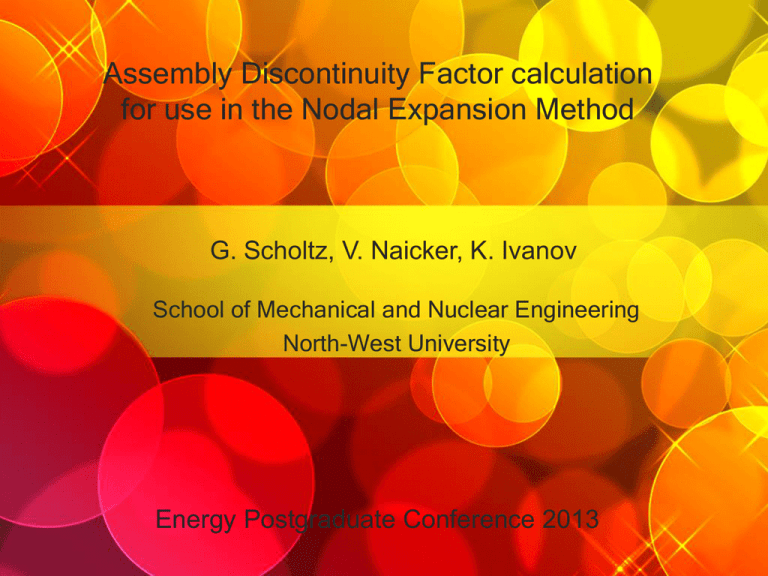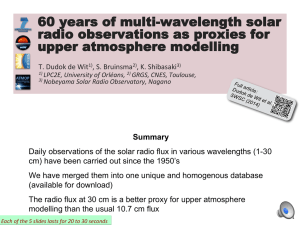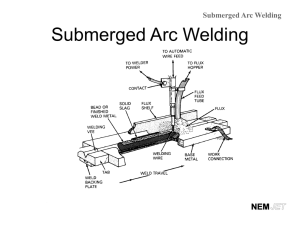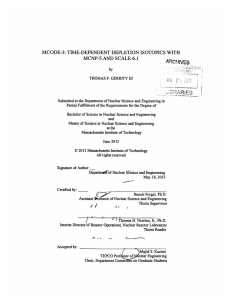Scholtz G _Final - Energy Postgraduate Conference
advertisement

Assembly Discontinuity Factor calculation for use in the Nodal Expansion Method G. Scholtz, V. Naicker, K. Ivanov School of Mechanical and Nuclear Engineering North-West University Energy Postgraduate Conference 2013 Outline 1. Introduction – – Research aims and objectives Neutron flux calculation 2. Homogenization – – Generalized Equivalence Theory (GET) Assembly Discontinuity Factors (ADF’s) 3. Core layout and MCNP model 4. Results and Discussion – – – ADF MCNP Nodal Expansion Method (NEM) 5. Conclusion and further work Introduction – Research aims & objectives • • Benchmark studies for major reactor types. Stand-alone neutronics and T- H simulations, coupled afterwards. • • • Develop input model for SAFARI-1 using NEM. Calculate Assembly Discontinuity Factors using MCNP. Perform steady state analysis to calculate flux, power, etc. Neutron flux calculation • • • Knowledge of flux distribution required for power, criticality and fast fluence. NEM is a deterministic, nodal diffusion neutronics code. Nodal methods - • Reduced computational times. Large nodes compared to finite difference methods. Space averaged (homogenized) parameters. Modern, established method for full core calculations. Deterministic methods - Based on the solution of neutron transport equation. - Discrete ordinates, integral transport, diffusion theory. • Stochastic methods (MCNP) - Simulates particle behaviour by random sampling. - Highly accurate but computationally expensive. Homogenization • Generalized equivalence theory - Methods employed to replace heterogeneous lattice of materials with an equivalent homogeneous mixture. - Aim is to preserve reaction rates and multiplication factor. - Generalized Equivalence Theory matches the heterogeneous and homogeneous solutions by allowing for discontinuities. - Accomplished through suitable multiplier on each side of node boundary. • Assembly Discontinuity Factors - Reduces homogenization error. - ADF is ratio of the surface averaged heterogeneous flux to the volume averaged homogeneous flux. Core layout & MCNP model SAFARI-1 core MCNP (3 x 3 x 3) Results - ADF Thermal energy group (≤ 4eV) Fast energy group (> 4eV) x_max 0.486 0.122 x_min 0.494 0.124 y_max 0.449 0.104 y_min 0.455 0.105 z_max 0.473 0.122 z_min 0.472 0.124 Results - MCNP x - direction flux distribution 6.0E+15 6.0E+15 5.0E+15 5.0E+15 4.0E+15 4.0E+15 Flux Flux Axial flux distribution 3.0E+15 3.0E+15 2.0E+15 2.0E+15 1.0E+15 1.0E+15 0.0E+00 0.0E+00 0 10 • Fuel filled core 20 30 40 Height (cm) 50 60 0 10 20 30 40 Width (cm) 50 60 70 Results - NEM Axial flux distribution x - direction flux distribution 8.0E+14 8.0E+14 6.0E+14 6.0E+14 Flux 1.0E+15 Flux 1.0E+15 4.0E+14 4.0E+14 2.0E+14 2.0E+14 0.0E+00 0.0E+00 0 20 40 60 Height (cm) 80 100 • 15 x14x12 Nodes • Homogenized cross sections (NECSA) 0 20 40 60 80 Width (cm) 100 120 140 Conclusions and further work Conclusions • • • • MCNP can be used for ADF calculation. Consistent values for ADF. Current NEM results are sufficient for ADF implementation. MCNP calculation provides second set of results to compare to NEM. Further work • • • Complete heterogeneous model of SAFARI-1 reactor. Determine multi-group surface and volume fluxes for ADF calculation. Implement ADF into NEM input model. This work is based upon research supported by the South African Research Chairs Initiative of the Department of Science and Technology and National Research Foundation.







